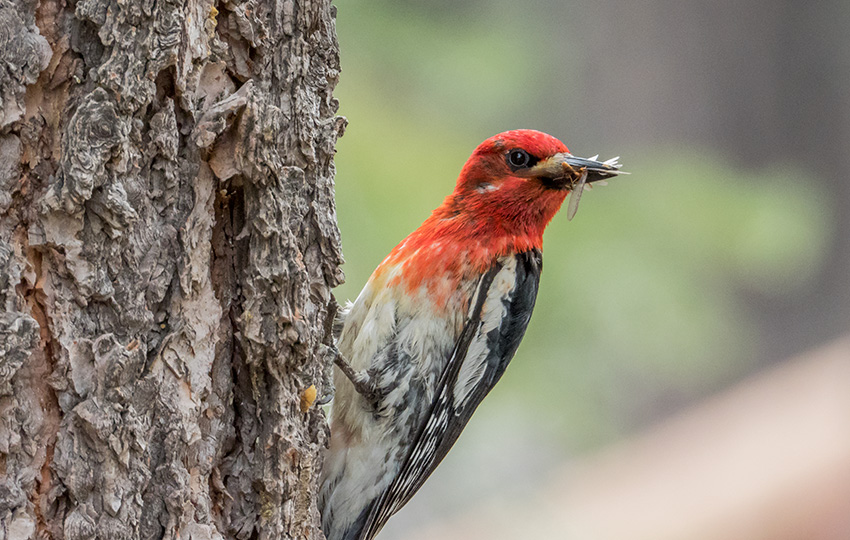
I used to love to log countless miles on the trail. There’s absolutely nothing wrong with this. However, as the saying goes, I now prefer to take time to stop and smell the roses. As a result, this process of learning about the flora and fauna of the Sierra Nevada has been one of my greatest joys. This is because it’s made my time outdoors (i.e. in my “backyard”) more informed and immersive.
Admittedly, this article is limited in scope. Most of these resources won’t help you if you live in the Midwest or on the East Coast, for example. And for that I apologize.
Essentially, I’ve written this article for people who either live at or visit Lake Tahoe and the surrounding Sierra Nevada Mountains. That’s because I constantly meet people at work, on the trail, or online who have questions about what they find when hiking Mount Tallac, for example. So I created this page as a location to which I could point that would enable those people to pursue their own nature studies.
Support Tahoe Trail Guide with a financial contribution via PayPal (single contribution) or Patreon (reoccurring contributions). Your support of Tahoe Trail Guide is very much appreciated!

Also note that my intended audience for these resources are general outdoor enthusiasts. For example, people who love being outdoors but don’t necessarily have a background in botany or ornithology. So you’re not going to find the Jepson Manual on my list for plant identification resources, for example. Not that it isn’t the absolute end-all, be-all resource for identifying California plants. It’s just so technical that anyone who doesn’t possess a background in botany, specifically in California, will find it useless. Keep in mind, that there’s always more than one way in which to accomplish a goal.
As I’m sure you already know, there are countless available resources about every subject imaginable. For studying birds, you could get books ranging from avian anatomy to specific species to regional habitats. I’d love to own every possible book about the birds of California. But at some point you have to be realistic about how many reference books you need (or can afford and store!).
My reference material lists might look long to some and short to others. So it’s up to you to determine what’s going to meet your needs. But I’ve found that one book seldom covers everything. Well, let me rephrase that. The books that cover “everything” are broad in scope but shallow in detail. And vice versa. So the books that focus on only one genus or species, for example, are shallow in scope but deep in detail.
And as you deepen your practice of observing nature, you’ll find that your interests become more focused. Therefore, certain reference material will be more relevant to you. Just know that I didn’t buy all of these books at once (and neither should you!). I’ve simply been accumulating them over a number of years to accommodate my ever-changing and evolving interests. And I suggest that you do the same.
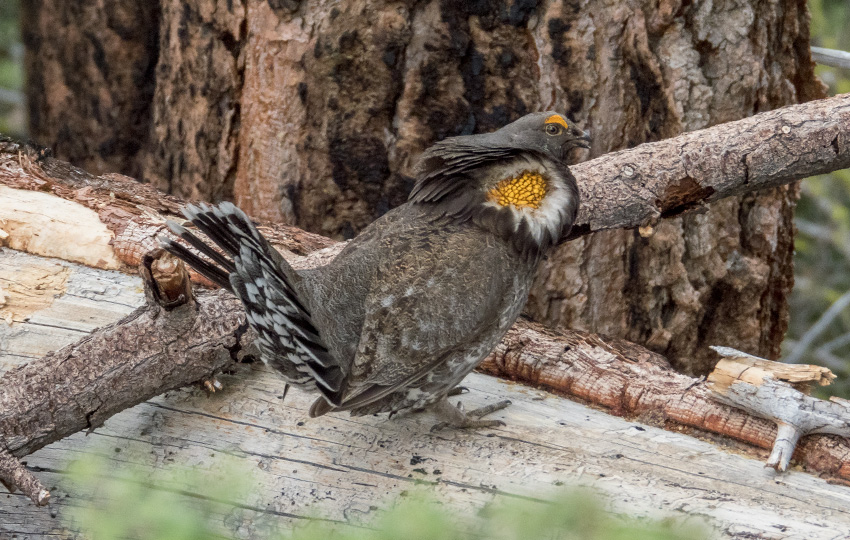
Notes About The Naturalist Resource Lists
The books on these lists are in alphabetical order. They’re not in any order of importance or usefulness. That said, I do own additional books and publications beyond these resources. But the resources on theses lists are the ones that I most often reference.
These lists include the book title, author, ISBN, and some very brief commentary regarding the book. Keep in mind that this resource page is not a book review. You can find plenty of those on Amazon or Goodreads, for example. I’ve ultimately listed these specific resources because I’ve personally found value in owning and referencing them.
Please note that some of the books on this list might be out-of-print, which is pretty common for niche nature-related books. So you may luck out and get a really great price on them because they’re “old” or “outdated.” Or you may find just the opposite in that they could be really expensive. My recommendation is that you don’t spend too much on any one of these books. The used book market always fluxuates, so wait for a better price.
Lastly, and speaking of Amazon, if you purchase books from the below lists through their respective Amazon affiliate links I receive a small portion of the total cost. And it’s at no extra cost to you.
Thank you for your support!

Plant Identification Books for the Sierra Nevada
No one book or resource about Sierra Nevada plants will serve all of your needs. But this is true for nearly any endeavor, right? One-stop shopping is seldom actually true. Again, there’s never just one way in which to perform a goal. So, keep in mind, that each one of the following resources on this list offers something unique and helpful.
- Conifers of California #ad – Ronald M. Lanner, ISBN 9780962850530 (Lots of full-color photos and illustrations, alongside well written descriptions.)
- Discovering Sierra Trees #ad – Stephen F. Arno, ISBN 0939666049 (An older book, but it includes quality information and exceptional pen and ink illustrations.)
- Falcon Guide: Sierra Nevada Wildflowers #ad – Karen Wiese, ISBN 9780762780341 (Full-color photos, succinct information, and the wildflowers are grouped by color.)
- Falcon Guide: Tahoe Wildflowers (A Month-by-Month Guide) #ad – Laird R. Blackwell, ISBN 9780762743698 (Full-color photos, succinct information, and the wildflowers are grouped by the months in which they typically bloom.)
- iNaturalist (Website to upload photos for identification, and where all of the Tahoe Wildflower Big Year projects are active. Please note that the website is far more powerful and useful than the phone app version.)
- Nature Guide to the Southwest Tahoe Basin #ad – Charles Quinn, ISBN 9780970889546 (A general resource for the Southwest Tahoe Basin, which includes the Fallen Leaf Lake area and Desolation Wilderness. Features information about plants, birds, and other wildlife.)
- Plants of the Tahoe Basin: Flowering Plants, Trees, and Ferns #ad – Michael Graf, ISBN 9780520215412 (Considered the “Bible” by various botanists regarding plants found in the Tahoe Basin and surrounding areas. Features some full-colored photos and succinct information.)
- Sierra Nevada Flora #ad – Norman F. Weeden, ISBN 9780899970738 (Another “Bible” for many botanists interested in Sierra Nevada plant life. This one, however, is more technical than most. This is because, in order to make full use of the book, you have to know how to key plants according to the Jepson Manual.)
- Sierra Nevada Tree Identifier #ad – Jim Paruk, ISBN 9780939666836 (Succinct information alongside pen and ink illustrations.)
- Tahoe’s Spectacular Wildflower Trails #ad – Julie S. Carville, ISBN 9780692698181 (Great information, full-color photos, and lots of hiking trail information. This last part also makes the book slightly less useful for some people because the book is organized into hikes. And it features the plant life you’d find on each hike. So, keep in mind, that it’s not organized like most other plant identification books.)
- The Laws Field Guide to the Sierra Nevada #ad – John Muir Laws, ISBN 9781597140522 (For many years, this was my go-to book for all nature-related observations of Sierra Nevada flora and fauna. This book features wonderful color illustrations alongside succinct information. And it covers everything from birds to plants to weather features.)
- Trees of the California Sierra Nevada #ad – George A. Petrides, ISBN 9780811731669 (Exceptional black and white illustrations alongside succinct information.)
- Wildflowers of the Tahoe Sierra #ad – Laird R. Blackwell, ISBN 9781551050850 (Pocket-sized field guide featuring full-color photos and succinct information.)
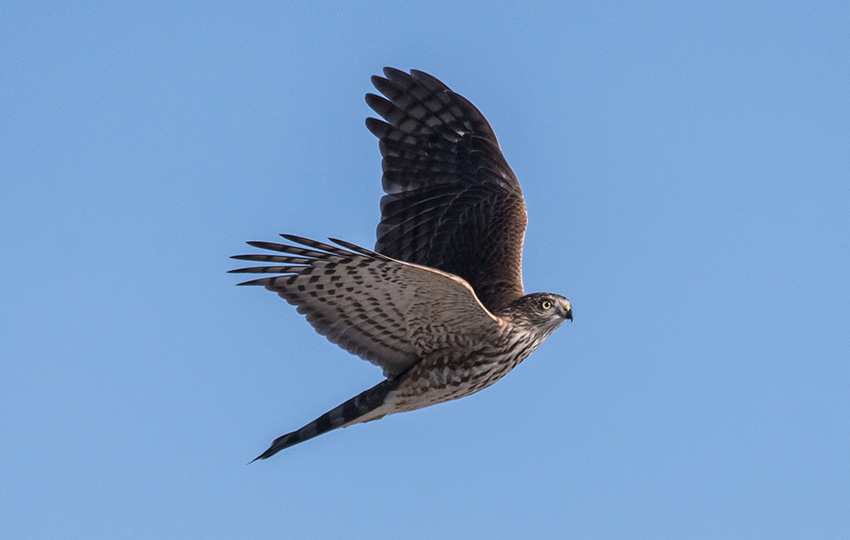
Bird Identification Books for the Sierra Nevada
The following list compiles my favorite resources for identifying birds of the Sierra Nevada. Again, a one-size-fits-all book simply doesn’t exist. Every resource on this list offers something unique. That could be illustrations highlighting the various stages of a bird’s plumage or their preferred habitat. Some books even provide origin information about each birds’ name.
- Birds of California Field Guide #ad – Stan Tekiela, ISBN 9781647551988 (Small and dense, and filled with incredible color photos and one-page per bird descriptions.)
- Birds of the Lake Tahoe Region #ad – Robert T. Orr, James Moffitt, Library of Congress Card Number 78-170538 (This is an out-of-print book that might be hard to find, but offers some great historical information about bird behavior in the Lake Tahoe area.)
- Birds of Northern California #ad – Quady, Dunn, Garrett, Small, ISBN 9780964081093 (Small but dense, and chock full of great full-color photos and succinct information.)
- Birds of the Sierra Nevada: Their Natural History, Status, and Distribution #ad – Beedy, Pandolfino, Hansen, ISBN 9780520274945 (A comprehensive resource for the Sierra Nevada. This book features beautiful full-color illustrations, although limited in number, and lots of information about behavior and habitat preference in addition to field marks.)
- eBird (Website for documenting your bird observation checklists. I don’t find that it’s very beginner friendly, but it’s technically not that difficult to use. I just don’t like the interface or the lack of searchability of the site.)
- Field Guide to Owls of California and the West #ad – Hans Peeters, ISBN 9780520252806 (As you can imagine, this book is dedicated to Owls of the western half of the US. Small, dense, and filled with full-color photos and slightly expanded information.)
- Hansen’s Field Guide to the Birds of the Sierra Nevada #ad – Hansen, Beedy, Donkin, ISBN 9781597145336 (Beautiful full-color illustrations, although limited, and wonderful information and anecdotes beyond just identification-related details.)
- iNaturalist (Website to upload photos for identification, and where all of the Tahoe Wildflower Big Year projects are active. Please note that the website is far more powerful and useful than the phone app version.)
- Nature Guide to the Southwest Tahoe Basin #ad – Charles Quinn, ISBN 9780970889546 (A general resource for the Southwest Tahoe Basin, which includes the Fallen Leaf Lake area and Desolation Wilderness. Features information about plants, birds, and other wildlife.)
- Peterson Field Guide to Birds of Western North America #ad – Roger Tory Peterson, ISBN 9780547152707 (Beautiful full-color illustrations laid out in a way that makes comparisons with similar species easier, along with succinct information. Also features specific identification markers for each bird.)
- Peterson Reference Guide to Woodpeckers of North America #ad – Stephen A. Shunk, ISBN, 9780618739950 (Lots of full-color photos alongside comprehensive information about Woodpeckers of North America.)
- Sierra Nevada Birds: A Compact Field Guide Companion #ad – David Lukas, ISBN 9780983489108 (Thorough information about Sierra Nevada Birds. However, there a no photos in this book. So just know that you’re going to get lots of information about birds in this book, but you’ll need to have other books for photos of each bird.)
- The Laws Field Guide to the Sierra Nevada #ad – John Muir Laws, ISBN 9781597140522 (For many years, this was my go-to book for all nature-related observations of Sierra Nevada flora and fauna. This book features wonderful color illustrations along very succinct information. And it covers everything from birds to plants to weather features.)
- The Sibley Guide to Birds: Second Edition #ad – David Allen Sibley, ISBN 9780307957900 (Beautiful full-color illustrations showing various stages of development of each bird, along with some behavior and habitat information.)
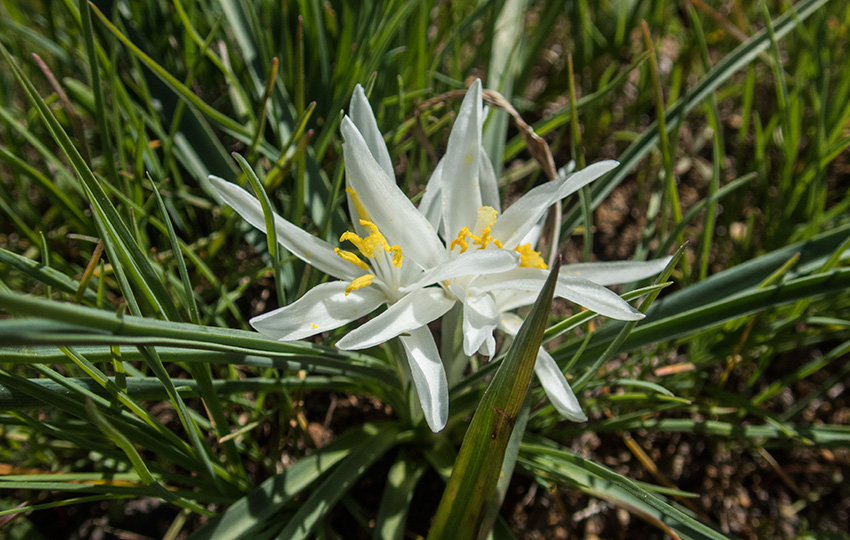
General Naturalist Reference Materials
Committing to memory (i.e. rote memorization) species’ identification marks is one aspect of observing nature. But it’s not really enough, in my book, to offer an immersive outdoor experience.
For example, most bird identification books seldom go into detail about nesting preferences. At most, they mention the general habitat in which a bird lives and whether or not it’s a cavity dweller. However, identification books, as you might expect, tend to focus mostly on field marks (i.e. defining physical characteristics of birds). So reading the Audubon Birdhouse Book (see below), for example, may fill in some of the gaps regarding behavior that other books omit. And, that new information can provide another perspective to your birding experience.
So, even though, the following reference materials aren’t specific to Sierra Nevada flora and fauna Identification they’re helpful in their own right. This is because they can add more context to our nature observations.
- Audubon Birdhouse Book, Revised and Updated: Building, Placing, and Maintaining Great Homes for Great Birds #ad – Margaret A. Barker, Elissa Ruth Wolfson, ISBN 9780760368626 (Even if you don’t have any interest in building bird houses, this book features thought-provoking information about a selection of birds’ behaviors and their preferred habitats.)
- How to Identify Plants #ad – H.D. Harrington, L.W. Durrell, ISBN 9780804001496 (An older book, but a fantastic resource for learning about plant terminology, and it features nice illustrations.)
- Plant Identification Terminology: An Illustrated Glossary #ad – James G. Harris, Melinda Woolf Harris, ISBN 9780964022164 (This book features exceptional illustrations and very succinct descriptions to plant terminology.)
- Sibley’s Birding Basics #ad – David Allen Sibley, ISBN 9780375709661 (A great place in which to start on your journey of becoming a birder. Offers lots of information about developing your sense of perception and observation with some illustrations.)
- Tahoe Area Plants & Animals Pocket Naturalist Guide – Great Basin Outdoor School and Nevada Fish & Wildlife Education Project (These types of pocket guides are very basic and, as such, great for kids. And they’re a low-cost way of supporting the organization that creates them.)
- The Laws Guide to Nature Drawing and Journaling #ad – John Muir Laws, ISBN 9781597143158 (Even if you’re not interested in learning how to draw your nature observations, this book is absolutely beautiful to flip through. And, John Muir Laws always offers helpful ways in which to better learn to observe nature).
- The Naturalist’s Notebook #ad – Nathaniel T. Wheelwright & Bernd Heinrich, ISBN 9781612128894 (This isn’t a Sierra Nevada reference book. But it’s a wonderful book about learning how to observe, and then creating the habit of recording your observations.)
- What It’s Like to Be a Bird: From Flying to Nesting, Eating to Singing #ad – David Allen Sibley, ISBN 9780307957894 (Extraordinary illustrations by David Allen Sibley alongside engaging information about bird behavior.)
- What the Robin Knows #ad – Jon Young, ISBN 9780544002302 (Potentially too cerebral for some people. However, this book inspires and encourages you to really develop your sense of perception and observation. I appreciate how it’s changed my perspective of seeing birds, and nature in general.)
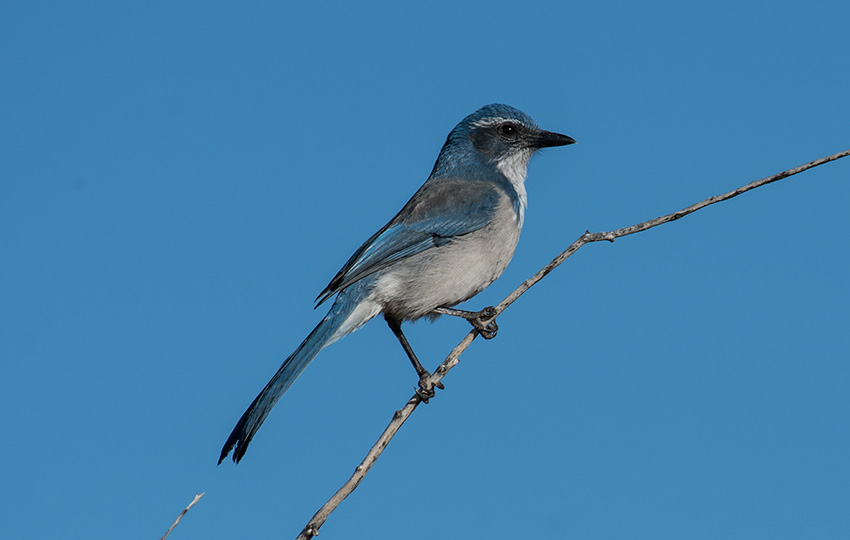
Final Thoughts
The above lists will evolve over time as I continue to accumulate and evaluate naturalist resources for the Sierra Nevada. Again, I can’t emphasize enough the fact that no one book about plants or birds of the Sierra Nevada will cover everything. So if you’re truly interested in learning, you may ultimately accumulate a small library of reference materials. That said, I can think of a lot worse ways in which to spend your time and money!
I know that there are lots of other useful resources for learning about the flora and fauna of the Sierra Nevada. So, please share your recommendations in the comment section below.
Articles About Lake Tahoe Plants and Wildlife
The following Tahoe Trail Guide articles feature information, history, and stories about the various forms of plant and wildlife that you can find at Lake Tahoe.
Lake Tahoe Wildflowers
- Two Major Factors that Determine Peak Bloom Times for Wildflowers at Tahoe
- Tips for Finding Wildflowers at Tahoe
- The Sinister Mustard Flower Rust
- Big Yellow Wildflowers with Big Green Leaves called Woolly Mule’s Ears and Arrowleaf Balsamroot
Trees of the Sierra Nevada
Birds of Lake Tahoe
- The Tree Cleaving Pileated Woodpecker
- How Woodpecker Contribute to Healthy Forests at Lake Tahoe (and other fun facts)
Fish of the Sierra Nevada
Creating an Immersive Outdoor Experience
- Cultivating Adventure in Your Daily Life
- Deepen Your Outdoor Experience by Documenting Your Nature-Related Observations
- Considerations and Reasons for Doing a Big Year
More Resources for Learning about Lake Tahoe Plant and Wildlife
The Lake Tahoe Basin Management Unit is the division of the US Forest Service that manages the wildlands immediately surrounding Lake Tahoe. Visit their website because it provides information about Tahoe-related outdoor activities. But if they don’t have the answer they’re great about pointing you in the right direction.
I also recommend checking with the Tahoe Rim Trail Association. In addition to classes and information regarding hiking and backpacking at Tahoe, they often offer wildflower-specific hikes.
After that, I would look at some of the Tahoe news and information websites such as:
Those sites usually feature some sort of wildflower-related articles at the beginning of each summer.